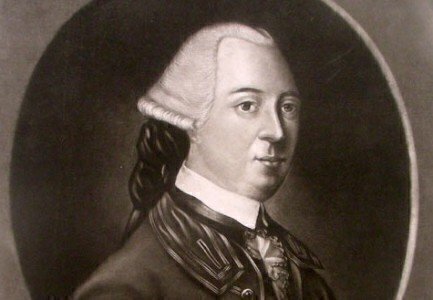John Hancock and his signature are two of the best-known elements related to the Declaration of Independence. But how much do you know about the former president of the Continental Congress?
On May 24, 1775, Hancock was named as the presiding officer over the Second Continental Congress, which was meeting in Philadelphia to discuss the military threat posed by the British. A little more than a year later, Hancock was the first to sign the document declaring independence.
Here are 10 facts about the man whose name is now synonymous with impressive signatures.
1. Hancock was a wealthy guy. He was from Massachusetts and his family had money, which he inherited when his uncle died. In fact, Hancock may have been the richest man in New England when he inherited a shipping fortune.
2. He was a bright student. Young Hancock graduated from Harvard at the age of 17. He was also a quick learner in the business world.
3. Hancock should have been a Loyalist, but he wasn’t. With his wealth and social standing, Hancock should have been a leading member of an elite group that didn’t want independence. Instead, he sympathized with people like John and Samuel Adams, who were patriots.
4. John Hancock, smuggler? Well, he may have been an importer, too, but goods like tea that arrived in New England on Hancock’s ships may have escaped paying a duty. The suspicions led the British to seize Hancock’s ship, Liberty, which started a riot. John Adams got Hancock off the hook from the smuggling charges.
5. Hancock also had a role in the Boston Tea Party incident. While Hancock wasn’t on a ship tossing tea overboard, he was at meetings when outrage was vented at the British. He riled up the crowd with a famous statement: “Let every man do what is right in his own eyes.”
6. The British really didn’t like Hancock. The British troops that set out to Lexington and Concord in 1775 may have been hunting for Hancock and his friend, John Adams, as well as for military supplies that were stored for militia use. Hancock had to be talked out of taking the battlefield against the redcoats. And his arrest was ordered by the British after the battles.
7. Hancock was a behind-the-scenes force early in the American Revolution. Hancock raised money for the Revolution, he helped secure troops, and he played a role in getting naval forces organized. But a homesick Hancock left Congress in 1777 to return to Massachusetts.
8. He was the longtime governor of Massachusetts. Hancock was elected in 1780 to lead his state and was its governor for most of the remaining years of his life. He was immensely popular in his home state.
9. Hancock wasn’t at the Constitutional Convention in Philadelphia. Hancock had health issues by 1787 and wasn’t in the Massachusetts delegation. But he played a key role in his state’s ratification of the Constitution, when he overcame his own objections about the lack of a Bill of Rights to urge its passage.
10. What’s the deal with the signature? It’s not true that Hancock signed the Declaration in a big way to taunt the King of England. The legend goes that Hancock stated that “King George will be able to read that!” In reality, Hancock was the first to sign in a matter fitting for the president of the Congress. And only one other person was in the room when he signed it, unlike in that famous painting that shows a gaggle of patriots witnessing the event. Hancock did take a big risk: His signature was evidence of treason if things didn’t go well in the war!








